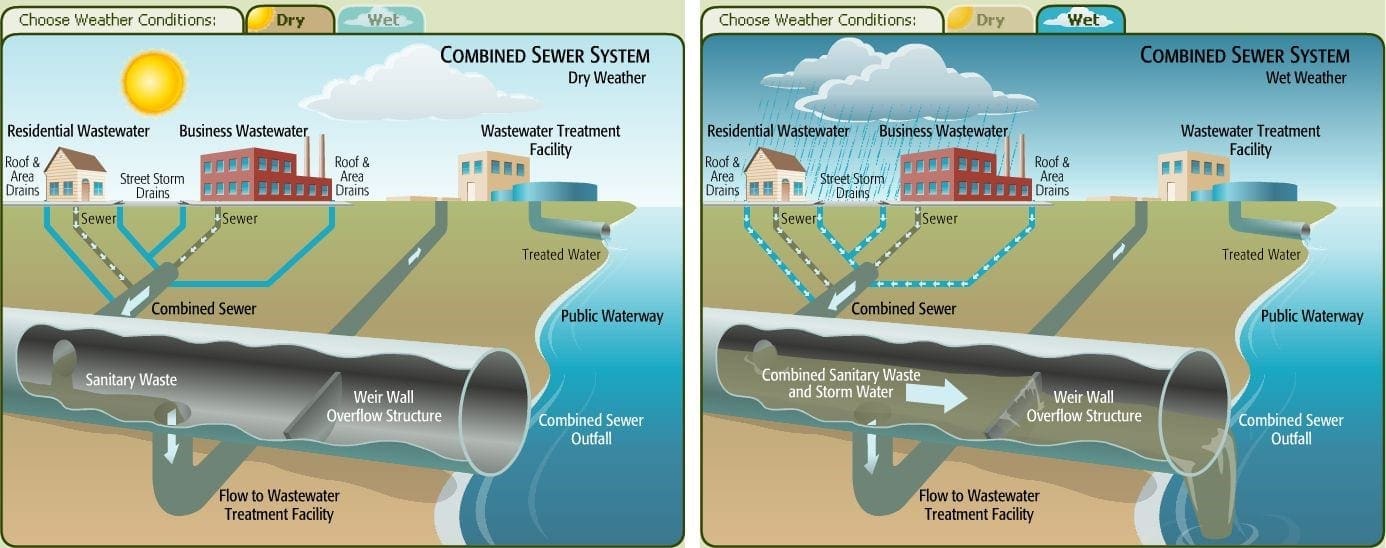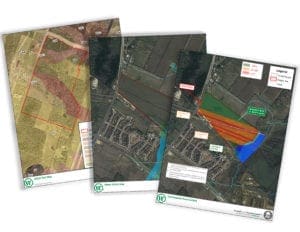
31-story tower proposed in downtown Austin near SXSW Center
WGI is providing engineering services for a proposed 31-story, 326,509-square-foot high-rise at the corner of 14th and Guadalupe streets in Austin, Texas.
Learn from award-winning professionals — explore our whitepapers, blogs, and the latest industry updates.
Join our dynamic organization of engineers, land surveyors, landscape architects, environmental scientists, and architects!
Talk to a market leader today! We’ll answer any questions you have about our professional services.

It is safe to say that engineering design standards for routine rainfall events are adequate. City populations are growing and the demand for pollution mitigation and effective infrastructure are begging the question – how do we prevent future environmental and infrastructure disaster? WGI explores using green infrastructure to manage Combined Sewer Overflow (CSO).
American cities have experienced major storm events resulting in infrastructure malfunctions and water quality snafus for combined sewer systems. Combined sewer overflow (CSO) is the “discharge from a combined sewer system that is caused by snowmelt of storm water runoff” (DECNY, 2016). Governments and municipalities are striving to reduce the CSO discharges to local waterbodies.
Why all the fuss over CSO discharges? “Treatment plants are unable to handle flows that are more than twice design capacity… when this occurs, a mix of storm water and untreated wastewater discharges directly into the City’s waterways” (NYCEP, 2016). I hope my audience agrees, but I certainly hope to keep local waterways as clean and protected as possible.
How does this affect America’s fastest growing cities? It is imperative that infrastructure keeps up with population growth. As a new generation that prides itself on environmental awareness, we must consider steps to implement new infrastructure to prevent the adverse effects of CSOs. Ultimately, this will improve water quality and associated environmental conditions of our local waterbodies.
What can be done to avoid future conundrums? The implementation of green infrastructure can be used to prevent storm water from entering a City’s sewer systems. Green infrastructure examples include bio-swales, green roofs, and rain gardens. Other options include upgrades in wastewater treatment facilities, storm sewer expansion, and CSO retention tanks to mitigate future pollution. These types of green and conventional source controls act to “detain or retain storm water runoff though capture and release, infiltration into the ground, vegetative uptake and evapotranspiration” (NYCEP, 2016). Upfront, green infrastructure can reduce the need for storm water storage and treatment systems – which is a plus for “afterthought” or “uh-oh” costs (both environmental and monetary).
Mother Nature will take its course and human nature is a challenge to influence; by changing the nature of how we adapt our infrastructure solutions, we can avoid environmental problems caused by CSOs.
Sources:

WGI is a national design and professional services firm leading in technology-based solutions for the construction of public infrastructure and real estate development. At WGI, we’re providing Tomorrow’s Infrastructure Solutions Today.

WGI is providing engineering services for a proposed 31-story, 326,509-square-foot high-rise at the corner of 14th and Guadalupe streets in Austin, Texas.

By Will Anderson – Austin Business Journal Click Here to view the original article More details have emerged for the high-rise planned on the site

A Site Investigation Report (SIR) is a vital first step in determining whether to roll the dice on an investment property or leave the table.

Before you lock down your next project site in the ATX area, be sure that you understand the challenges you may face when developing a project in Central Texas. Our experts have seen it all!

Despite the Covid-19 pandemic, two Florida-based developers plan to build a mid-rise hotel in East Austin, among the neighborhood’s largest.

As you prepare your real property for development, it’s essential to understand and face the zoning, political, and unique site challenges — and create a comprehensive strategy for overcoming them.
You’ve been searching for a place like WGI. We look forward to meeting you soon.
Sign up to receive emails to hear our latest news and achievements in our monthly newsletter.
Enter your zip code, and we’ll personalize your experience with local projects, office locations, team members, and more.
WGI supports its associates with meaningful opportunities for growth, strong benefits and perks, while we work collaboratively with clients and co-consultants to shape and improve communities.






WGI is a dynamic organization with opportunities nationwide for engineers, land surveyors, landscape architects, environmental scientists, and architects.